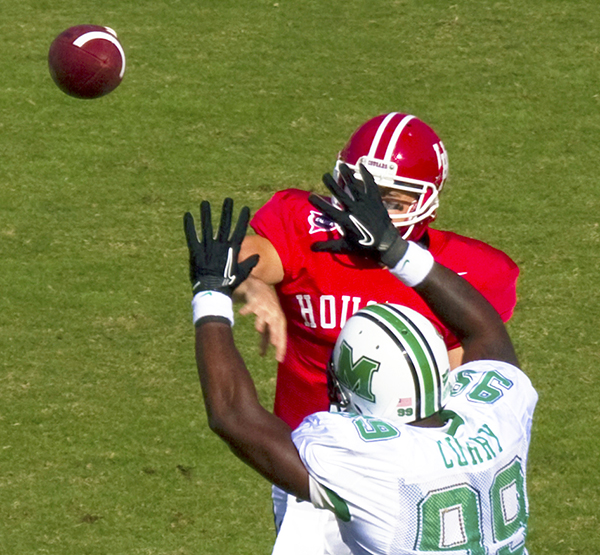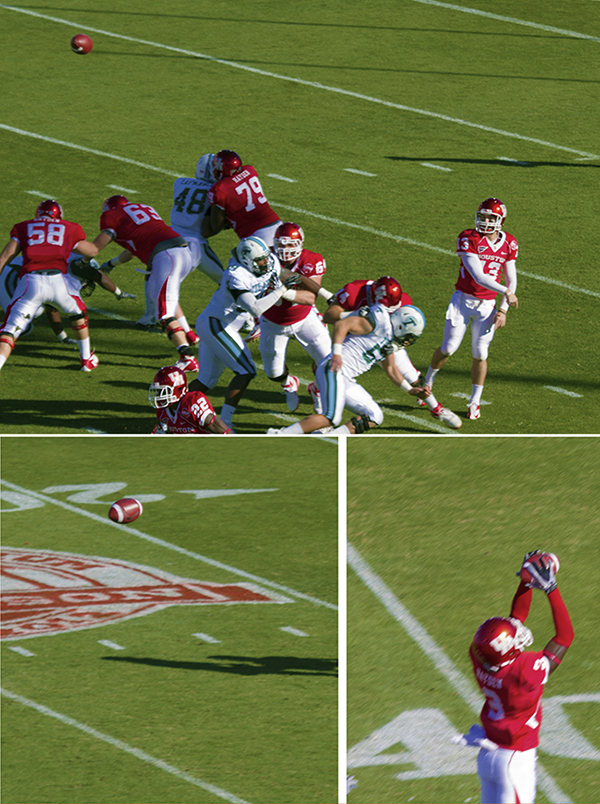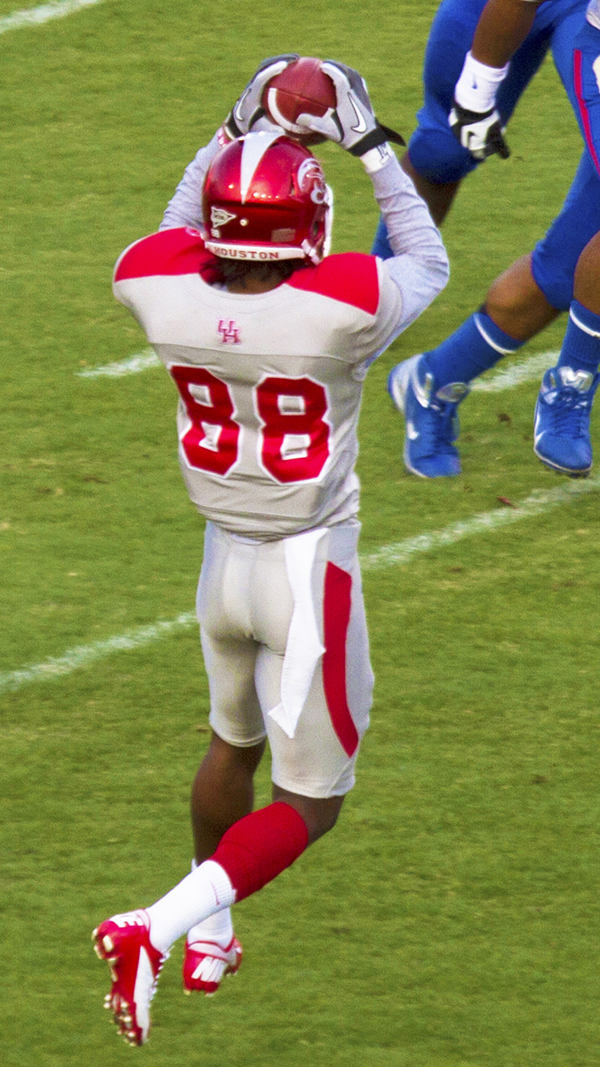Rifling
Today, a look at rifling. The University of Houston's College of Engineering presents this series about the machines that make our civilization run, and the people whose ingenuity created them.
Football season is here again. This time, I grow more curious about rifling. We've all watched that long-lens shot on TV: A football comes toward both us and the downfield receiver. It spins like a top, even in slow motion. Steady as a rock, it moves toward us at about fifty miles an hour. So, exactly what do quarterbacks gain by rifling their passes like that?
For one thing, they temporarily minimize drag on the football by making it go end-first -- by presenting the least cross-section to the air. Long narrow projectiles will naturally tumble as they fly through air. Tumbling increases drag and ruins accuracy.
That's no problem for a knife-thrower. His dense knife travels a short distance. He intentionally makes it tumble end-over-end an exact number of times. He's learned to make the knife rotate, say, twice before it reaches the target point first
When we study the physics of rotation, we find something surprising about footballs and knives. If a rotating body is disturbed while it's in motion, it'll find a way to rotate about the axis that gives the greatest moment of inertia. The knife starts out that way. The football does not, but it'll eventually get there too. Its most natural rotation would also be tumbling.
If a football could fly far enough, it would flip over and tumble, and it sometimes does. When a quarterback gives the ball a strong spin, its motion is held gyroscopically for a while. With luck and skill, it stays so until it reaches a receiver.
If you've ever used a bow and arrow, you may've noticed the arrow wobbling slightly after its rotating feathers brush your fingers. But its strong rotation soon stabilizes the wobble so the arrow can fly true. Same story for a bullet: It sometimes wobbles as its stern clears the barrel, then it straightens out.
The person throwing a football lays fingers on the strings and pulls on them during the throw. If the ball gets a quarter turn in a four-foot swing, it then keeps rotating at around 300 rpm. Compare that with a target-rifle bullet: One turn per foot is typical for gun barrel rifling. So a bullet leaving at 3000 feet-per-second rotates a lot faster than a football -- maybe 180,000 rpm. (Bullets have been known to tear apart under huge centrifugal forces before they hit anything. That's rare, but it happens.)

UH quarterback Case Keenum releases a pass over a defender. Notice how his fingers have rolled off the ball, imparting a crisp rifled rotation.
Bullets travel a lot further than footballs, and they have a longer, narrower, more unstable shape. Now and then, after traveling, say, six hundred yards, bullets also occasionally flip and rotate end-over-end. And they go far wide of the mark.
So, if I find myself watching football on TV this season, I'll look a lot more closely at the passing game -- at that lovely arcing ball. I'll look for so many forgotten details of its remarkable complex journey -- all the way from scrimmage into the distant end zone.
I'm John Lienhard, at the University of Houston, where we're interested in the way inventive minds work.
For a video version of this episode click Rifling. (It was produced by the UH Cullen College of Engineering Office of Communications.)
One may learn a great deal about the various projectiles discussed here by looking at them individually on the web. I'm also grateful to Lewis Wheeler, UH Mech. Engr. Dept., for his expertise on target shooting. The rifling question is also addressed by Jearl Walker in his Flying Circus of Physics (New York: John Wiley & Sons, Inc., 2007): pp.55-56.
For more on aspects of rotational momentum, see Episodes 1313 and 1332.
All photos by John Lienhard

These three photos (top, lower left, lower right) show how a long well-rifled pass keeps its integrity of flight during its travel from passer to distant receiver.

When a well-passed ball reaches the receiver, it is oriented exactly as he expects it to be.